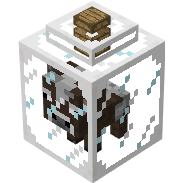Permission System
Overview
The Balm permission system provides a platform-agnostic way to handle permissions across different Minecraft mod loaders (Fabric, Forge, NeoForge). It integrates with each platform’s native permission systems when available, falling back to a common implementation otherwise.
Core Concepts
Permission Identifiers
Permissions are identified using Minecraft’s ResourceLocation objects in the format:
- Namespace: typically your mod ID
- Path: the specific permission path (dot.seperated)
Example:
private static final ResourceLocation PERMISSION_YOURCOMMAND = ResourceLocation.fromNamespaceAndPath("yourmod", "command.yourcommand")
Permission Context
Permissions are resolved in a specific context, which can be:
- A player context
- A command source context (player, entity or command block)
- An offline player (UUID only)
Note that only player contexts are fully supported on all platforms. Most permission systems do not support non-player permissions and will instead fall back to the default resolver you specify when registering your permissions. At the moment, Balm also does not support offline player permissions.
Usage
Registiering Permissions
// For commands, there is a helper method to register a permission which will use the permission system for players and fall back to the regular Vanilla permission level check for non-players like command blocks.
BalmCommands.registerPermission(
ResourceLocation.fromNamespaceAndPath("mymod", "command.feature"),
2 // Permission level: 2 (gamemaster), same as e.g. /gamerule command
);
// You can also register custom permissions. For example, the above helper method uses this:
Balm.getPermissions().registerPermission(
permission,
(context) -> context.getCommandSource().map(it -> it.hasPermission(permissionLevel)).orElse(false)
);
Checking Permissions
// Check if a player has a permission
boolean hasPermission = Balm.getPermissions().hasPermission(player, permission);
// Check if a command source has a permission
boolean hasPermission = Balm.getPermissions().hasPermission(commandSource, permission);
Requiring Permissions on Commands
The BalmCommands interface provides helper methods for command permission checks:
// Require a single permission
Commands.literal("mycommand")
.requires(BalmCommands.requirePermission(PERMISSION_ID))
.executes(context -> { /* command logic */ });
// Require any of multiple permissions
Commands.literal("mycommand")
.requires(BalmCommands.requireAnyPermission(PERMISSION_A, PERMISSION_B))
.executes(context -> { /* command logic */ });
// Require all permissions
Commands.literal("mycommand")
.requires(BalmCommands.requireAllPermissions(PERMISSION_A, PERMISSION_B))
.executes(context -> { /* command logic */ });
Platform Integrations
Balm automatically integrates with:
fabric-permissions-api(third party mod) when it’s present on Fabric- The NeoForge PermissionAPI on NeoForge
- The Forge PermissionAPI on Forge
- Fallback to your defined default resolvers / vanilla permission levels when no permission handler is installed
Example
public class MyCommand {
private static final ResourceLocation MY_PERMISSION =
ResourceLocation.fromNamespaceAndPath("mymod", "command.feature");
public static void register(CommandDispatcher<CommandSourceStack> dispatcher) {
// Register permission with level 2 access (gamemasters)
BalmCommands.registerPermission(MY_PERMISSION, 2);
dispatcher.register(Commands.literal("mymod")
.then(Commands.literal("feature")
.requires(BalmCommands.requirePermission(MY_PERMISSION))
.executes(context -> {
// Command implementation
context.getSource().sendSuccess(() ->
Component.literal("Feature executed!"), true);
return 1;
})
)
);
}
}
